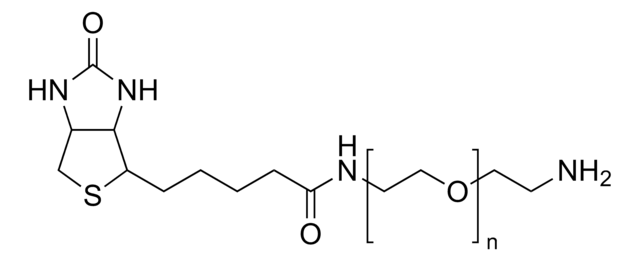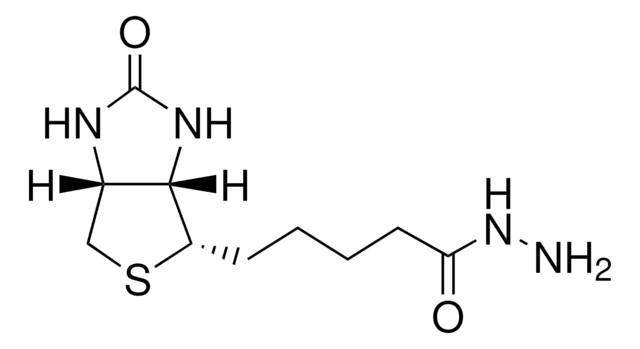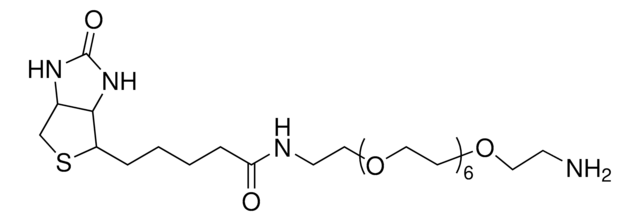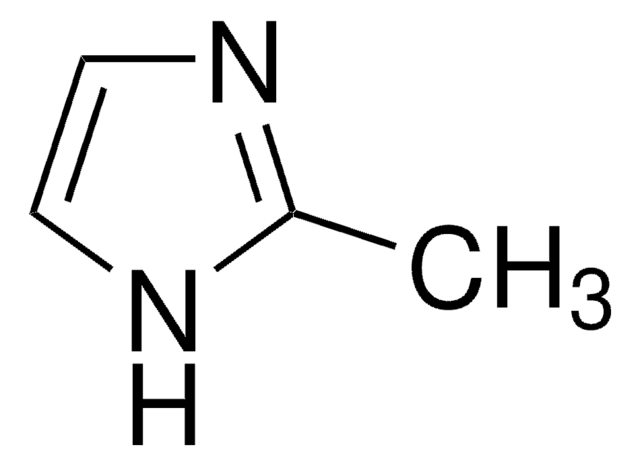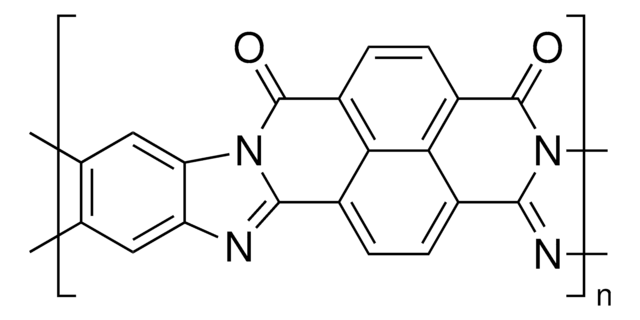About This Item
推荐产品
化驗
≥95% (oligomer uniformity)
形狀
powder
分子量
average Mn 700
反應適用性
reagent type: cross-linking reagent
Ω-end
amine
α-end
biotin
儲存溫度
−20°C
SMILES 字串
NCCOCCOCCOCCOCCOCCOCCOCCOCCOCCNC(=O)CCCC[C@@H]1SC[C@@H]2NC(=O)N[C@H]12
InChI
1S/C30H58N4O11S/c31-5-7-37-9-11-39-13-15-41-17-19-43-21-23-45-24-22-44-20-18-42-16-14-40-12-10-38-8-6-32-28(35)4-2-1-3-27-29-26(25-46-27)33-30(36)34-29/h26-27,29H,1-25,31H2,(H,32,35)(H2,33,34,36)/t26-,27-,29-/m0/s1
InChI 密鑰
UHIKHSATVJGWOI-YCVJPRETSA-N
包裝
儲存類別代碼
11 - Combustible Solids
水污染物質分類(WGK)
WGK 3
閃點(°F)
Not applicable
閃點(°C)
Not applicable
個人防護裝備
Eyeshields, Gloves, type N95 (US)
商品
Progress in biotechnology fields such as tissue engineering and drug delivery is accompanied by an increasing demand for diverse functional biomaterials. One class of biomaterials that has been the subject of intense research interest is hydrogels, because they closely mimic the natural environment of cells, both chemically and physically and therefore can be used as support to grow cells. This article specifically discusses poly(ethylene glycol) (PEG) hydrogels, which are good for biological applications because they do not generally elicit an immune response. PEGs offer a readily available, easy to modify polymer for widespread use in hydrogel fabrication, including 2D and 3D scaffold for tissue culture. The degradable linkages also enable a variety of applications for release of therapeutic agents.
Devising biomaterial scaffolds that are capable of recapitulating critical aspects of the complex extracellular nature of living tissues in a threedimensional (3D) fashion is a challenging requirement in the field of tissue engineering and regenerative medicine.
我们的科学家团队拥有各种研究领域经验,包括生命科学、材料科学、化学合成、色谱、分析及许多其他领域.
联系技术服务部门